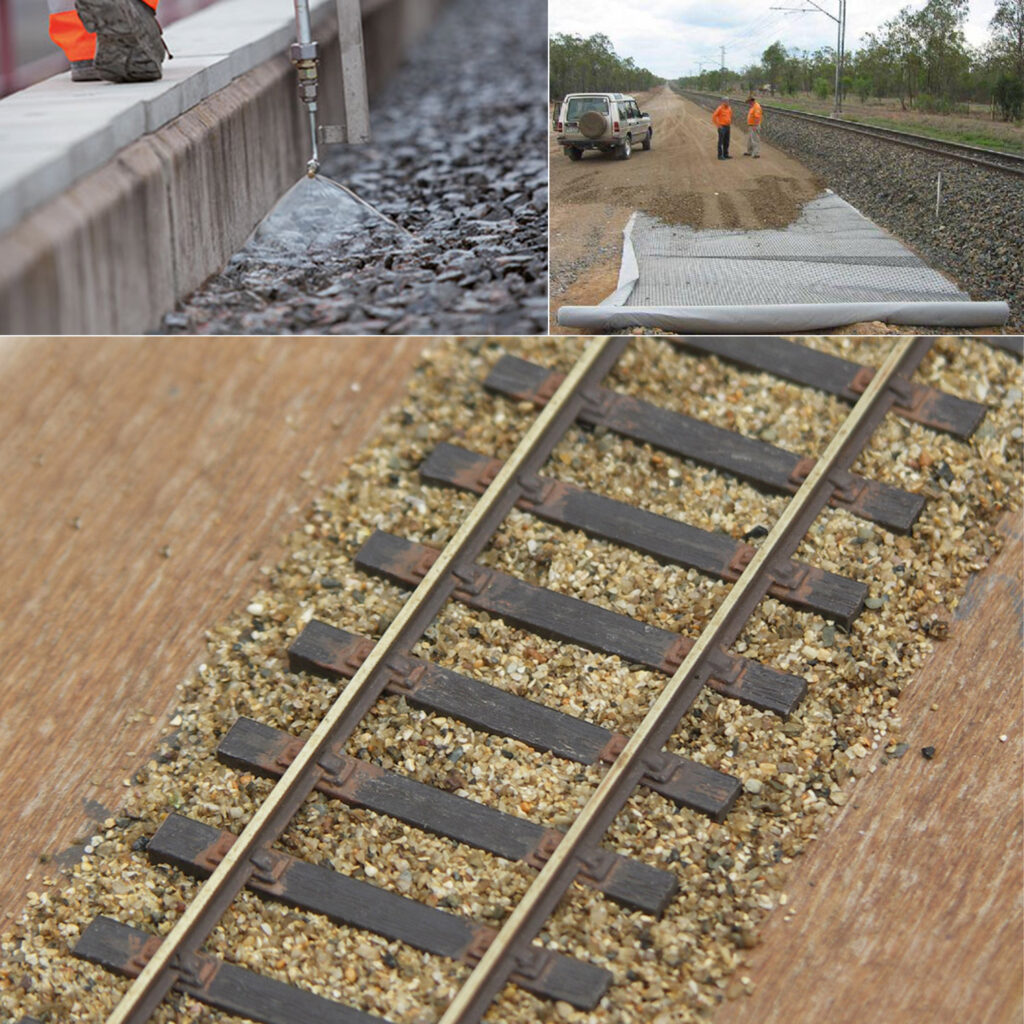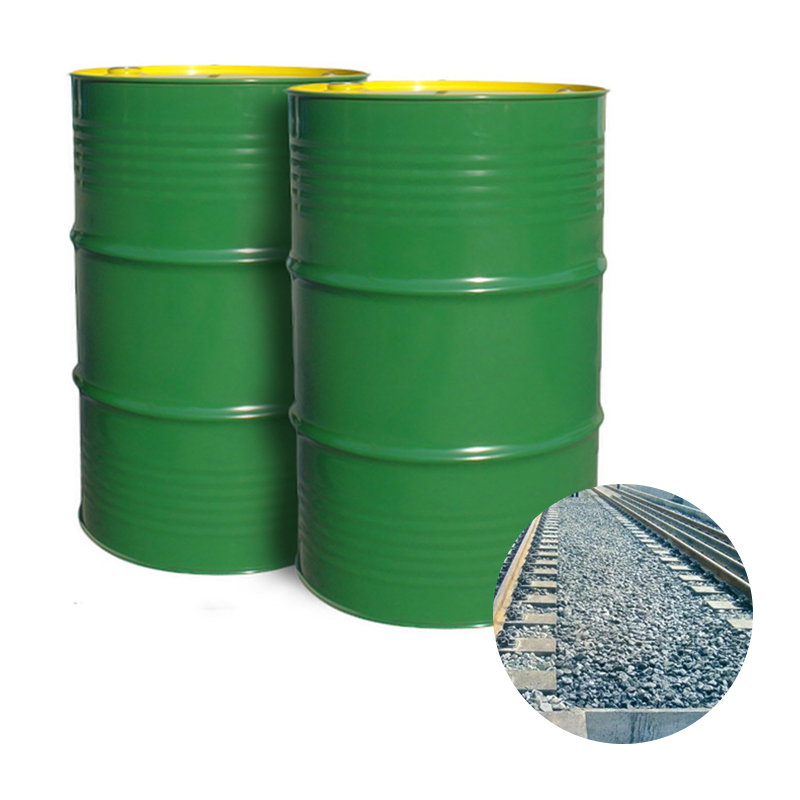Ballast Adhesive
Unleash the Power of Connection with Our Polyurethane Adhesive –
Where Strength Meets Versatility! From Unyielding Bonds to Resilient
Solutions, Trust in Excellence for a Seamless Tomorrow
What is PU Ballast Glue?
Rail ballast glue is a new type of track bonding material composed of high-molecular polymers, modifiers, and additives. It has excellent bonding strength, durability, and elasticity. Rail ballast glue can bond ballast (crushed stones) together to form a stable track structure, effectively improving track smoothness, durability, and safety.
- Construction advantages: Rail ballast glue is easy to apply. Simply pour the glue into the ballast, and no complicated construction process is required.
- Economic advantages: Rail ballast glue can reduce the amount of ballast used, lowering track construction costs.
- Environmental advantages: Rail ballast glue can reduce dust pollution, improving environmental protection levels.
- Performance advantages: Rail ballast glue has good bonding strength, durability, and elasticity, effectively improving track smoothness, durability, and safety.


Rail ballast glue is widely used in the construction of high-speed, conventional, and subway rails. Specific application areas include:
- High-speed rail construction: Rail ballast glue can effectively improve the smoothness of high-speed rail tracks, reducing noise and vibration during high-speed rail operation.
- Conventional rail construction: Rail ballast glue can extend the service life of conventional rail tracks, reducing maintenance costs.
- Subway rail construction: Rail ballast glue can reduce dust pollution in subway tracks, improving the comfort of subway rides.
- Other rail construction: Rail ballast glue can also be applied in the construction of tramways, mine tracks, port tracks, and other rail tracks.
a call to action
If you have any questions Contact for free
User’s Guidance
Easy to use instructions
① Ballast cleaning
Use machinery or manual work to clean the impurities and dust in the ballast.
The ballast should be dry, free of oil and water.
②Preparation of ballast rubber
Mix the ballast glue and water according to the instructions.
The mixing time should be no less than 2 minutes to ensure that the ballast glue and water are fully mixed.
③Ballast rubber pouring
Pour the prepared ballast rubber into the ballast.
When pouring, attention should be paid to uniformity to ensure that the ballast is fully wrapped with ballast glue.
④Ballast tamping
The ballast is tamped mechanically or manually.
Tamping should be even and smooth to ensure full contact between the ballast glue and the ballast.
⑤Maintenance
After the ballast rubber is poured, it should be maintained.
The maintenance time is generally 24 hours, and the specific time can be adjusted according to the instructions.
Construction points
The construction of ballast rubber should be carried out at an ambient temperature of 5-35°C.
When constructing ballast rubber, attention should be paid to safety and skin contact should be avoided.
After the construction of ballast rubber, the site should be cleaned up in time.
FAQ
Rail ballast glue is made from environmentally friendly materials. It is non-toxic and harmless, does not produce harmful substances, and has a small environmental impact.
Rail ballast glue has good weather resistance and can withstand harsh environmental conditions such as high temperature, low temperature, rain, and ultraviolet radiation.
The cost of rail ballast glue is competitive with other track bonding materials and can save users money.
The construction technology of rail ballast glue is simple and easy to operate, without the need for complex construction processes.
Rail ballast glue can also be applied in other fields, such as road, bridge, and water conservancy engineering.
The shelf life of ballast rubber is generally 12 months.
The construction temperature of ballast rubber is generally 5-35℃.
Ballast rubber should be stored in a cool, dry place away from direct sunlight
